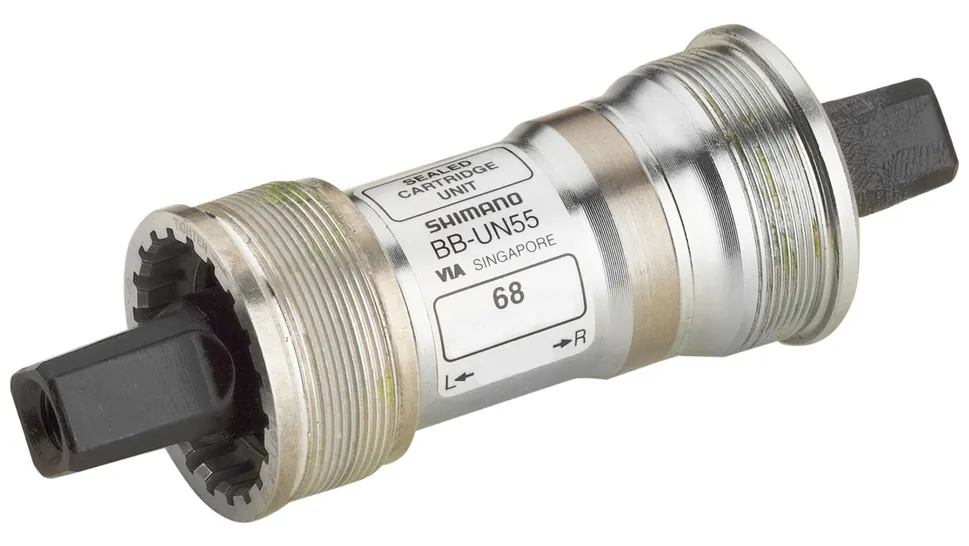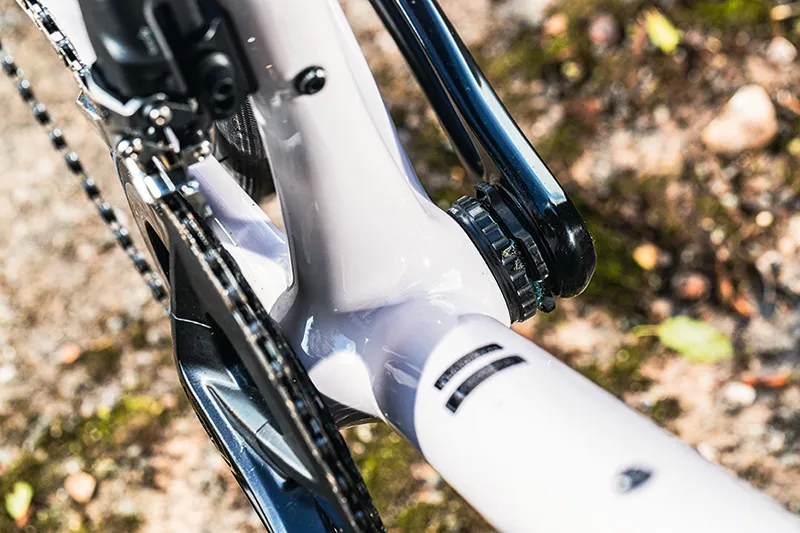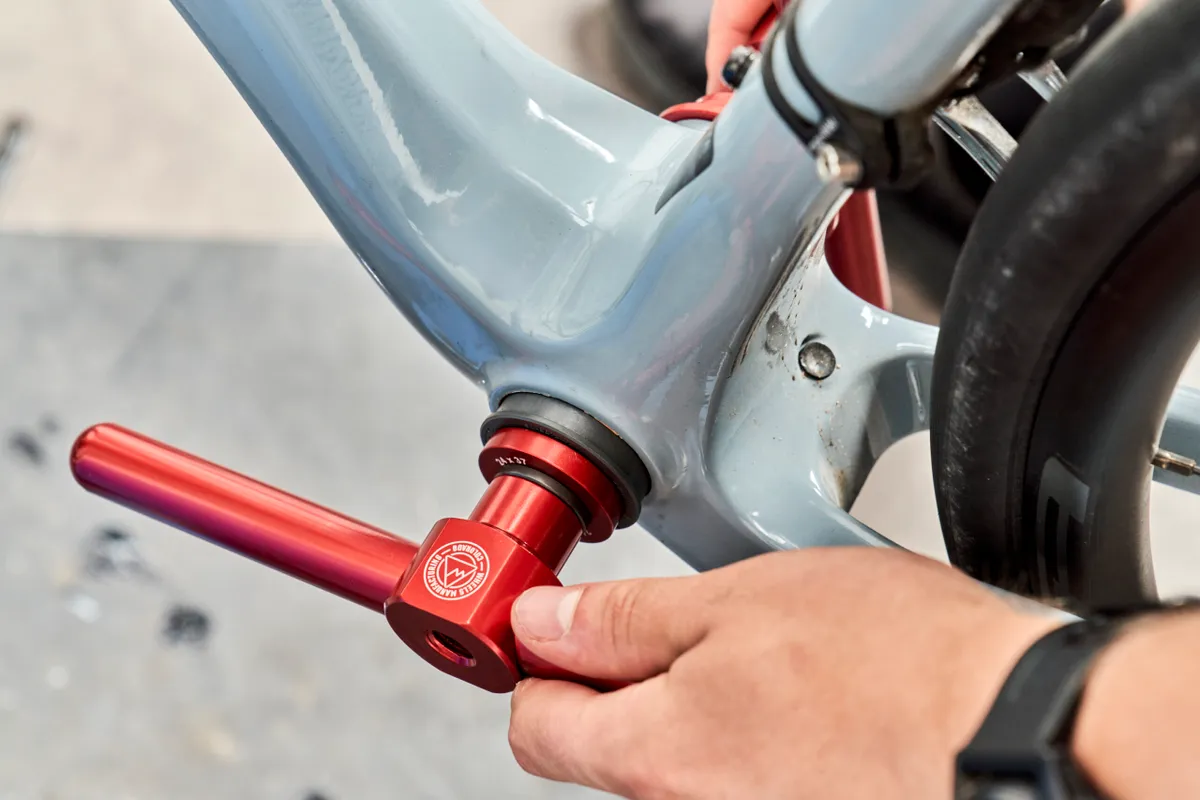For those who don't geek out on bikes, the term bottom bracket probably doesn't mean a lot. So what exactly is a bottom bracket?
The bottom bracket is a bicycle component used to connect a bicycle’s crankset to its frame, allowing it to rotate independently of the frame itself. Without a bottom bracket your bike's transmission would not be able to rotate.
The bottom bracket is normally threaded, but sometimes pressed, into a frame’s bottom bracket shell, where the crankset is mounted and the frame's tubes meet.
Without a bottom bracket your bike's transmission would not be able to rotate. Bottom brackets use bearings to allow for rotation. Some can be adjusted or rebuilt, but modern designs are more frequently designed to be replaced rather than repaired.

Some designs include an axle or spindle while others simply provide a surface upon which an axle can spin, with the axle being part of the crankset.
Ten years or so ago, manufacturers developed more and more bottom bracket 'standards', with seemingly every brand developing its own take on the bottom bracket.
But the last few years have seen brands row back, so that recent bikes typically use one of a few options. In general, oldies are goodies, with Pressfit less popular, although the T47 bottom bracket has established itself as a modern standard used by multiple bike manufacturers.
What are the main bottom bracket standards used today?
Although some brands continue to use their own non-standard bottom brackets, such as Cervélo with its BBright, and Pinarello's bikes are still equipped with Italian threaded bottom brackets, there are just a few standards used on the majority of bikes launched in the last few years.
BSA Threaded

BSA bottom brackets were for many years the de facto standard for bottom bracket dimensions. They've become popular again, with brands such as Cannondale and Specialized returning to the standard on their most recent bikes.
BSA bottom bracket bearings screw into a 33.7mm diameter shell in the bike. How far apart the bearings are depends on the type of bike: in road bikes it's 68mm, in MTBs it's 73mm, in downhill MTBs it's 83mm and in fat bikes it's either 100mm or 120mm.
The bearings now normally sit externally to the frame, but in the past it was more typical for them to be inside the shell, with a length of the crank spindle exposed between the bearing and the crank arm.
BB86 and BB92

BB86 bearings for road bikes and BB92 bearings for MTBs are pressed into the shell in the frame, rather than being threaded, but are designed to work with the same crank spindle lengths as used by BSA. That means that the bottom bracket shell in the frame can be wider, for greater rigidity and pedalling efficiency.
T47

A disadvantage of a BSA bottom bracket is that the 24mm diameter crank spindle is relatively narrow and so needs to be heavier to retain rigidity. T47 bottom brackets have a wider diameter that fits a 30mm spindle, which can be made lighter, although you can buy variants to fit a 24mm axle.
T47 is threaded though and so it's easier to avoid creaks and misalignment.
SRAM DUB

If you've browsed bike specs, you've probably seen mention of SRAM DUB bottom brackets. Rather than an alternative bottom bracket standard, DUB bottom brackets are available to fit in all the common bottom bracket shell widths. SRAM's crank spindle then comes in just a single diameter that fits inside the DUB bearings.
And the rest
If your bike uses something else, read our guide to bottom bracket standards for more obscure options.
Can I replace a bottom bracket?

When a bottom bracket begins to fail, its bearings can make unpleasant creaking noises and develop play.
Replacing a bottom bracket is normally a relatively quick and inexpensive job for someone who is mechanically minded. You do need the right tools though, which differ with the type of bottom bracket.
To replace a BSA threaded bottom bracket, you need to use a ring tool to loosen the locknut that's handily also compatible with Centerlock brake rotor locknuts with external threads.

Meanwhile, replacing a Pressfit bottom bracket needs a bearing extractor tool and bearing press to remove and replace the bearings. In general, this is significantly more expensive and it also needs to be used correctly to make sure that the new bearing is seated properly.




